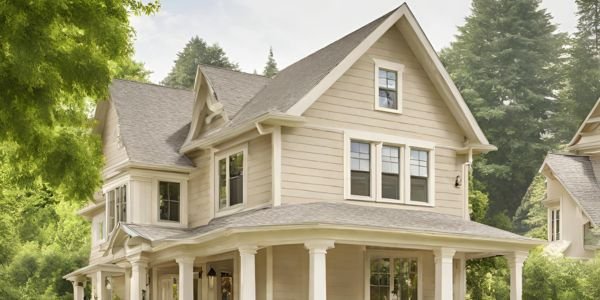When it comes to painting your home, whether inside or out, understanding the differences between interior vs exterior painting is essential. Each type of painting serves a distinct purpose and requires careful consideration to achieve the best results. Let’s delve into the nuances of interior and exterior painting to help you make informed decisions for your home.
Interior painting is all about creating a comfortable and inviting atmosphere within your living spaces. It’s an opportunity to express your personality and style while enhancing the functionality of each room. From soothing neutrals to bold accent walls, interior paint colors play a crucial role in setting the mood and ambiance of your home.
When choosing interior paint colors, consider factors such as natural light, room size, and existing décor. Soft, light colors can make smaller rooms feel more spacious, while darker shades add drama and depth to larger spaces. Take advantage of online tools and resources to visualize different color combinations and ensure your chosen colors complement your interior design aesthetic.

Interior painting projects also require attention to detail and proper preparation to achieve professional-looking results. Surface preparation, including cleaning, sanding, and patching any imperfections, is essential for ensuring a smooth and durable finish. Using high-quality paint and tools, along with proper application techniques, ensures long-lasting beauty and durability for your interior surfaces.
In contrast, exterior painting is primarily focused on protecting and preserving your home’s exterior surfaces from the elements. It’s a critical maintenance task that not only enhances curb appeal but also safeguards your home against moisture, UV damage, and other environmental factors.
When selecting exterior paint colors, consider factors such as architectural style, landscaping, and neighborhood guidelines. Neutral tones like beige, gray, or taupe are timeless choices that complement a variety of architectural styles and blend seamlessly with natural surroundings. Remember that darker colors absorb more heat and may fade faster than lighter shades, so choose wisely based on your climate and sun exposure.

Exterior painting projects require thorough surface preparation, including cleaning, repairing any damage, and applying primer to ensure proper adhesion and durability. Professional painters often use specialized equipment and techniques to tackle larger exterior surfaces safely and efficiently, such as sprayers and scaffolding.
In conclusion, interior vs exterior painting serve distinct purposes and require different approaches to achieve optimal results. Interior painting allows for creativity and personal expression while enhancing the comfort and functionality of your living spaces. Exterior painting is essential for protecting and preserving your home’s exterior surfaces while enhancing curb appeal and overall property value. By understanding the differences between interior and exterior painting and considering factors such as color selection, surface preparation, and application techniques, you can ensure beautiful, long-lasting results for your home.
In contrast, exterior painting is primarily focused on protecting and preserving your home’s exterior surfaces from the elements. It’s a critical maintenance task that not only enhances curb appeal but also safeguards your home against moisture, UV damage, and other environmental factors.
When selecting exterior paint colors, consider factors such as architectural style, landscaping, and neighborhood guidelines. Neutral tones like beige, gray, or taupe are timeless choices that complement a variety of architectural styles and blend seamlessly with natural surroundings. Remember that darker colors absorb more heat and may fade faster than lighter shades, so choose wisely based on your climate and sun exposure.
Get Your Painting Done Today
With the best value in GTA. Don’t be a stranger, call today!